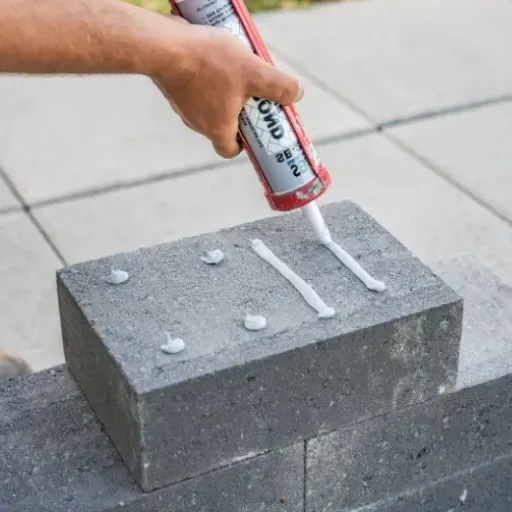Concrete floors have been made durable, yet even the toughest materials can crack, chip, or suffer other types of damages over a period of time. Whether you have a dilapidated porch, a cracked driveway, or a battered wall, it is important that you know how to undertake sturdy and effective repairs. The trick is to choose the right kind of adhesive or glue for the repair; this is what makes or breaks the fix: an easy repair or a recurring problem. This guide is intended to take you through understanding what your repair needs are, what adhesives work best, and how to make repairs that will last forever. Now, remove all the guessing from concrete repair and get professional results on your super fun next DIY project!
Understanding Concrete Adhesives
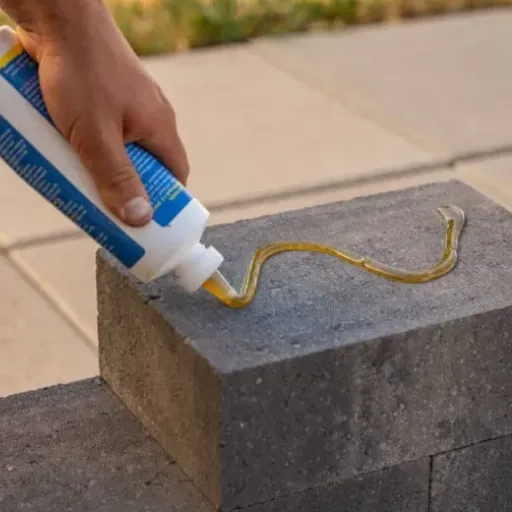
What is Concrete Glue?
Concrete glue, also called concrete adhesive, is used to bond two concrete surfaces to each other, or to bond other materials onto concrete. The glue acts as an agent for bonding and can establish a very secure, permanent connection in situations in which mechanical fasteners would be subjected to extreme stress or are prone to exposure from weathers. The adhesive is formulated to penetrate the porous concrete surfaces and build either a chemical or a mechanical interface.
The basic intention of the concrete glue is to enhance the strength and durability of any repair or construction involving concrete. It is mostly used for repairing cracks, joining precast concrete pieces, or attaching tiles, wood, and other materials onto concrete surfaces. Unlike normal glue, concrete adhesives are waterproof and resistant to temperature variations and heavy loads, and so they can be used both indoors and outdoors.
Concrete adhesives are normally easy to work with and are offered in liquid, paste, or powder that must be mixed with water. Therefore, complicated tools or procedures are avoided, granting the repair or construction easy flow. Provided the surface is well prepared, and the adhesive is applied properly, users can enjoy some very professional and lasting results.
Types of Adhesives for Concrete
For any concrete-related work, the choice of adhesive becomes of prime importance vis-à-vis durability, ease of application, and effectiveness of adhesion. Some of the major types of adhesives commonly found in concrete applications are given below, with details pertaining to their features and best usages:
- Epoxy-Based Adhesives: Epoxy adhesives are very versatile with an incredibly high potential and grasp of bonding strength. Resistance to moisture, chemicals, and temperature changes makes these adhesives a perfect choice for industrial situations, structural activities, and heavy load-bearing work. Also, these adhesives bond well to both old and new concrete, ensuring better durability. It is said in the reports that these adhesives have been exerted at compressive strengths of more than 2,000 psi in compressive tests, making them suitable for high-stress areas.
- Polyurethane Adhesives: The polyurethane adhesives are known for their flexibility and elasticity and for bonding dissimilar substances, such as concrete to metal or wood. They are considered waterproof adhesives. They can withstand any kind of environmental conditions; hence, they will be ideal for use outdoors such as in roofing, flooring, and exterior fixtures. Recent research revealed that polyurethane adhesives would maintain their property of being bonded even under extreme temperatures from -40°F to 200°F.
- Acrylic Adhesives: Acrylic adhesives set very fast and are used mainly for structural and finish applications. Their ability to adhere to different surfaces and fast setting properties makes them a choice for masonry repairs and light assemblies. Such adhesives come very handy in smaller-scale construction projects that require rapid installation.
- Adhesion Agents (Latex or Polymer-Based): Latex bonding agents represent another type of bonding agent useful in surface repairs and overlays. They are either mixed or applied on surfaces to increase the adhesion of concrete in the repairs, making sure that the layers firmly bond to one another. In the long run, such agents keep the concrete structure intact by preventing penetration of water and subsequent cracks. Latex bonding agents normally go for ASTM C1059 standards for high performance.
- Cementitious Adhesives: Cementitious adhesives are the more conventional ones used for tile works and light brickworks. These adhesives are easily mixed with a variable percentage of water and generally present a suitable compression and flexure strength. These characteristics attracted applications ranging from home improvements to large projects.
Chemical Composition of Concrete Adhesives
The formulation of concrete adhesives calls for some major chemical compounds to effect binding and working properties upon these adhesives. These adhesives usually contain polymers like latex or acrylic, which allow them some degree of flexibility, durability, and water resistance. The presence of these polymers assures the bond remains strong over changing environmental conditions.
Secondly, it has a cementitious base, usually portland cement, which gives the adhesive a high compressive strength and acceptability in concrete surfaces. Other ingredients like fillers and fine aggregates are incorporated to suit the texture, workability, and setting time of the adhesive for respective applications.
Another party chemicals are added to improve properties that include a curing time or slight anti-shrinkage. They resist chemicals or put processes together to resist freeze-thaw cycles. These admixtures might be superplasticizers, retarders, or waterproofing agents, depending on the use intended for the adhesive. When joined, it ensures that concrete adhesives perform their work well in various types of construction and repair situations.
Different Uses of Concrete Glue
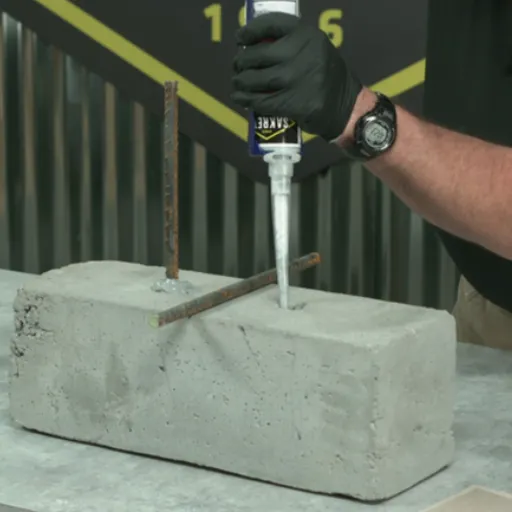
Heavy-Duty Uses
Heavy-duty concrete adhesives are designed to bond materials in extreme conditions. These adhesives are used in structural element repair work, precast concrete bonding, or steel reinforcements attachment to concrete. They offer ultimate strength and durability, which allows all high-stress connections to remain secured over time.
Heavy-duty concrete adhesives are also known to withstand extreme environmental conditions. They can tolerate temperature variations to any major extent, can withstand dampness, and can resist freeze-thaw cycles; therefore, both indoors and outdoors are suitable for applications. Besides, they are prepared such that they can bond well on different surfaces such as concrete, metals, stones, and masonry, which ensures versatility in complex construction operations.
Besides filling gaps and eliminating shrinkage and cracking, heavy-duty concrete adhesives are the real agents of repair. These retain the adhesion and keep repairs intact even under sustained pressure or mechanical stress. Adhesives provide permanent adhesion; hence, they are necessary in imparting strength to construction works and other forms of infrastructural maintenance.
Repairing Cracks and Chips
Among repair systems for concrete infrastructure, cracks and chip repairs need some special knowledge and some special materials for their sustainability and structural integrity. Cracks, when left untreated, can grow over time with environmental effects such as temperature variations, moisture ingress, or mechanical impacts. It has been reported that according to recent studies, the global market for concrete repair mortars is estimated to fetch $3.04 billion by 2027, proving the growing interest in maintaining and repairing the aging infrastructure.
In the repair work, the damaged area is first cleaned of dust and dirt and any loose particles so that the repair materials can better adhere. Polymer-modified mortars and epoxy-based fillers are generally used as advanced concrete repair methods to seal cracks. They assist with bonding the repair material to the original concrete and also provide resistance against water ingress and mechanical wear.
In addition, new technologies, such as self-healing concrete that uses embedded microcapsules carrying healing agents or bacteria, are making their way into repairs of cracks and chips. Such innovations provide automatic repair mechanisms whenever cracks appear, thus considerably reducing maintenance costs in the long run. By individual characteristics of the crack, professionals recommend the suitable repair method and that this method is guaranteed to stand the test of time for the safety of the structure concerned.
Using Concrete Adhesives for Tile Installation
Concrete adhesives are the paramount force for holding the tiles firmly against floors, walls, and countertops. These adhesives must cope with environmental stresses and everyday use so that they can serve as long-term solutions.
Features and Advantages of Concrete Adhesives:
- A Better Binding Action: Today’s concrete adhesives bind the tile strongly onto the substrate to prevent any lateral movement or detachment; these are useful qualities for any tile laid in an area subjected to heavy foot traffic or moisture, say a bathroom or kitchen.
- Water and Heat Resistance: Some adhesive formulations like polymer-modified or epoxy-based offer resistance to water and high-temperature variations, making them best suited to such applications as being in a humid area or just being exposed to heat on top of a fireplace.
- Easy Application: While the majority of these concrete adhesives are supplied in pre-mixed or easy-pretty packaging, they minimize the application time, also providing for an even texture on application. Using tools such as notched trowels helps to ensure that the adhesive layer is uniform to allow for laying and alignment of tiles.
Choosing the Right Adhesive:
To get by with maximum results, the choice of adhesive should be dictated by the type of tile material (ceramic, porcelain, glass, etc.) and the surface conditions. For instance:
- Porcelain Tiles: Because of density, polymer-enhanced adhesives are generally recommended.
- Outdoor Installation: Adhesives that are resistant to frost and flexible to temperature fluctuations should be used.
- Glass Tiles: Special translucent adhesives are used to retain clarity and do not discolor the bond.
If high-quality concrete adhesives are combined with the right technique, one can have a trustworthy, aesthetically pleasing, and long-lasting tile installation.
Choosing the Right Concrete Adhesive
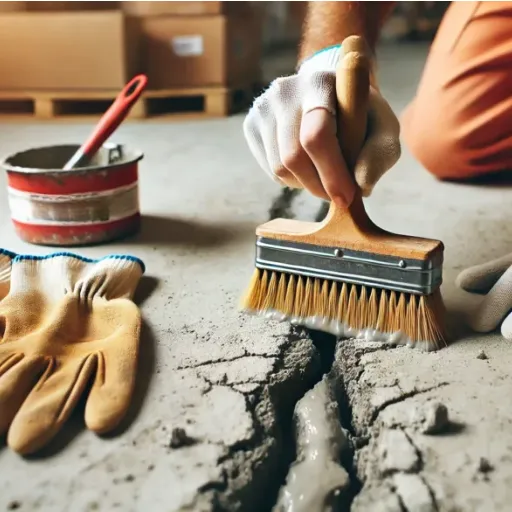
Factors to Consider: Environmental Conditions
It is essential to consider environmental conditions when choosing the best type of concrete adhesive to ensure durability and effectiveness. First, one of the important factors is temperature. Adhesives behave differently depending on temperature; therefore, one must know the climate and accordingly select the best adhesive possible. In cold regions, frost-resistant adhesives must be used, but heat tolerance must be considered in hot regions.
Moisture is another thing to contemplate. Exposure to water, in the form of high humidity, or frequent splashes, can find some adhesives wanting. Waterproof and water-resistant adhesives will ensure the best bonding results under such conditions. This is mostly an installation requirement for outdoor applicators or places subjected to rain splashes or continuous dampness like bathrooms or swimming pools.
Finally, there is also the matter of UV exposure. Adhesives with UV resistance should be selected in installations that will be exposed to direct sunlight for longer periods, to provide durability and resistance to deterioration or discoloration of the bonding. These environmental considerations should be taken into account to ensure a reliable and long-lasting installation.
Load-Bearing Requirements and Flexibility Needs
Bonding adhesives for load-bearing applications must be carefully considered for what loads and forces the adhesive is required to resist. Load-bearing adhesives are supposed to hold the bond together under constant stresses with high strength and durability. Epoxy adhesives are usually selected for such uses because of their outstanding load-resisting capacity and bonding ability. However, greater care should be used in matching the application with the precise specifications of adhesives so that bond failures may be prevented.
Flexibility forms another crucial element, especially in situations wherein the materials may undergo expansion or contraction or can move due to the temperature or mechanical forces applied. Such conditions favor the use of adhesives that are flexible in nature, for instance, those that are polyurethane-based, as they allow for some movement while maintaining the integrity of the bond. This feature becomes especially important when the installations involve two different materials that may vary in rates of thermal expansion; otherwise, cracking or detachment may ensue with the passage of time.
Since there is a trade-off between the load capacity and the flexibility, both of which need to be balanced for optimum performance, one must analyze the end-use environment and the physical stresses to which the bond will be subjected. When an adhesive works with just enough strength and slightly under adaptable conditions, its bonding application is trusted and expected to last longer. Always consult the manufacturer’s directions and test data for final verification of the adhesive’s performance and compatibility in your application.
Durability and Longevity of Adhesives
The durability and longevity of adhesives depend on several factors, namely, the type of adhesive, the environmental conditions, and the materials to be joined. Adhesives suited to an application will remain the most efficient when used within their application limits. For example, epoxy adhesives are highly durable when forming a structural bond, whereas pressure-sensitive adhesives might be best suited for lightweight and temporary bonds. Selecting a proper adhesive will ensure that the bond will last through stresses and retain its effectiveness for some time.
Adhesive performance is truly dependent on the environment. A change in temperature, a variation in humidity, or exposure to chemicals or UV rays may weaken the bond if the adhesive is not designed to withstand such challenges. For instance, adhesives that resist water and extremes of temperature are generally used outdoors, whereas indoor applications might call for lesser amounts. An adhesive can be tested after preparing it for the required condition to ensure it appears to work reliably.
Good maintenance work and proper application techniques certainly count toward an extended useful life of adhesives. Surfaces must be prepared well and cleaned from anything that can inhibit adhesion. Also, following manufacturer recommendations for cure time and environmental conditions during application would ensure that adherence performance is at its best. Providing a set of conditions along these lines would guarantee strong adhesive bonding for the users and allow their respective applications to be durable.
Application Techniques for Concrete Adhesives
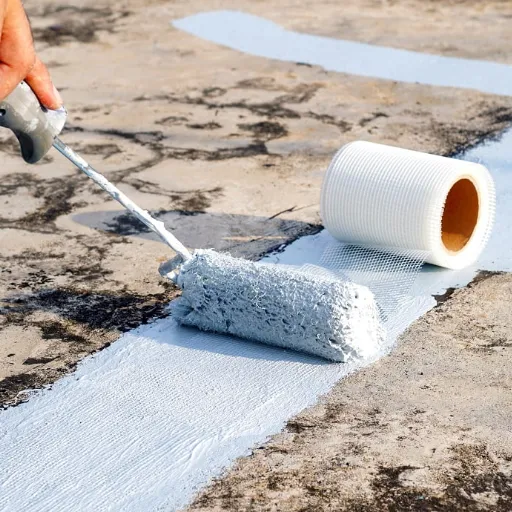
Surface Preparation Tips
Surface surface should be well prepared in order to make sure it will really bond with the concrete adhesives. As per the industry standard and recent research, here are the detailed steps one follows for best results:
- Clean the Surface Very Well:
Any dirt, dust, grease, oils, or even any existing coating on the surface of the concrete may hinder bonding. Brush off loose dirt or use a pressure washer. Wash off stains with a degreaser or cleaner meant for concrete. Once cleaned, do let it dry completely before applying the adhesive. - Check for Surface Damage:
Look for any cracks, holes, or irregularities on the site and select a concrete patch to repair those indictments so that the work surface is smooth and well-leveled. Such uneven surfaces may cause the adhesive to bond inconsistently or result in structural failures. - Remove Contaminants by Mechanically Abrading:
Modern methods recommend using mechanical means like sandblasting or grinding to remove the weakened concrete layers or contaminants such as laitance. This cleans the surface and improves its roughness so that the adhesive can form a stronger mechanical bond. - Moisture Testing:
Excess moisture in concrete prevents any adhesion. Using the moisture meter, check whether the concrete falls within moisture content limits as prescribed by the adhesive manufacturer. Generally, anything below 4% moisture is considered to be acceptable for most adhesives. - Priming the Surface (If Required):
Depending on the adhesive involved, the use of a primer might be necessary to improve adhesion. Refer to the product’s guidelines to understand whether priming is required and to be sure of proper application and drying times for the primer.
Correct Application Methods
When applying an adhesive, it is always necessary to carefully consider whether surface preparations are complete and conform to the requirements. Begin with spreading an even coat of adhesive on the prepared surface with the specified tool, usually a notched trowel, to make sure the coverage is adequate. He should keep the coats uniform and the required thickness, never too thick or too thin; otherwise, proper adhesion might be affected.
Observe the white time given by the adhesive manufacturer. The white time is the time during which the adhesive can still be worked on the surface before it begins setting. Adhesion mechanisms will be restricted if they go beyond this set time, resulting in poor bonding. For the installation to perform to its full potential, it is advisable to respect these specifications.
Finally, make sure the material to be bonded (flooring or tiles) is secured during the adhesive’s open time. Apply uniform pressure over the surface to disperse any air pockets and to achieve good bonding. Allow the adhesive to cure for an adequate amount of time as stated by the manufacturer before subjecting the bonded surface to any kind of stress.
Curing Times and Safety Precautions
Curing times differ from adhesive to adhesive and can also be affected by temperature and humidity, while adhesives may have set times anywhere from a quick 15-20 minutes to anywhere between 24 to 72 hours for complete curing. Following recommended curing times presented by the manufacturer is an essential precaution to prevent a weak bond and eventual material failure.
It is advisable for the materials to remain unmoved during the entire curing process so that both original and advanced adhesive strength are attained. Avoid subjecting the surface to heavy loads or high foot traffic so that even less stress is placed upon the bonded joints, at least until the cure time has been reached, and this will ensure a good performance level of the bonded joint.
When adhesive work is being conducted, safety is very important. When applying adhesives, you should always wear the prescribed protective equipment such as gloves and masks to minimize exposure to fumes or risk of skin irritation. Work in a well-ventilated environment so as to lower inhalation of the volatile compounds. Also, do not allow adhesives near any flame or heat source, for some adhesives may be inflammable. Thus, mandatory observance of the guidelines will make room for safer and efficient working conditions.
Common Mistakes to Avoid
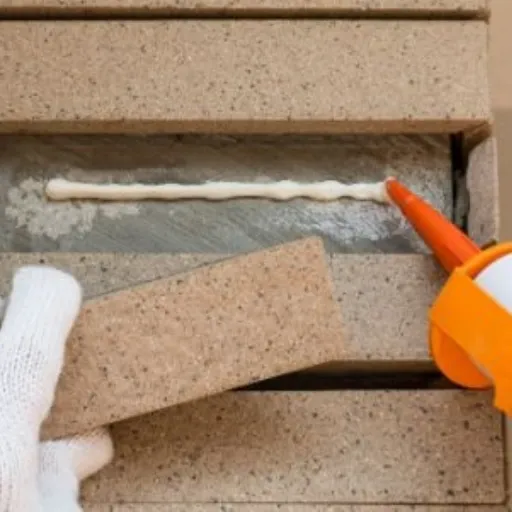
Improper Surface Preparation
One of the most frequent errors when using adhesives is neglecting proper surface preparation. The surfaces must be clean and dry, and any contamination such as dust, grease, and oil should be removed on account of these could hamper the adhesive’s ability to bond properly, the small joints, and the joint, in turn, will break with time. The utilization of a clean cloth, coupled with an apt cleaning agent, must be done to ensure that the surface is devoid of any impurities.
Another common mistake is to avoid the abrasion of surfaces, when required.For better adhesion, some materials, such as metal and plastic, need to be lightly sanded or abraded before applying the adhesive. It is said that this operation increases the area best available to the adhesive for gripping and thereby improves the adhesive bond in strength and durability.
The adhesive’s effectiveness could be compromised if not given ample drying or curing time after cleaning. Presence of moisture or cleaning solvents on the surface can affect the process of adhesion later on, giving poor results. Always adhere to the recommendations provided by the manufacturer regarding preparation and drying for a secure and everlasting bond. Proper surface preparation sets the foundation for travel whilst optimum performance goes to the adhesive through premature failure, beyond saving both time and effort in the end.
Using the Wrong Type of Glue
In choosing a wrong glue, it mates to weak bonds, failure of structure, or even the damage to the items being joined. Adhesives are intended for particular uses, so an unsuitable one used for an application will have a low adhesion capability. For instance, wood glue is supposed to bond wooden surfaces, whereas super glue is suitable for non-porous surfaces, such as plastic or metal. Mis-match the glue to the surface or task, and you compromise the strength as well as the durability of the bond.
It is indispensable to take into account the surrounding conditions and the loading weights with the choice of an adhesive. Some are not able to stand high temperature, moist or heavy stress, while others are. Weigh down all conditions that fit your project and adhere to an adhesive that will stand those conditions so that your bond lasts and meets performance expectations.
The glue that you are using may present certain problems if it is not suitable for your material, so it might be worthy to check the label or product specifications for glue compatibility information. In case of doubt, always ask around or do some extra research to select the best glue for your proposed materials and specific application. Proper choice and application save effort and time, and in fact, guarantee good and strong results.
Unsafe Working Conditions
Health hazards and compromised project outcome may be created if safety precautions regarding adhesives shall be neglected. Because of volatile organic compounds (VOCs) or other chemicals contained in adhesives, people may develop mild irritation of the mucous membranes or lungs, be allergic to the skins, or even develop chronic illnesses after prolonged exposure. Always use adhesives under well-ventilated conditions, thereby requiring PPE, such as gloves, masks, or safety goggles.
It is paramount to always follow the safety instructions of the manufacturer. Generally, these cover proper storage, safe handling, and correct actions that should be taken upon accidental spills or exposure. For example, an adhesive should be kept away from open flames or any source of heat, given that most adhesives are flammable. Also, knowing what to do for first aid may be helpful if the adhesive comes in contact with skin or eyes.
Lastly, the safety procedure involves the proper disposal of all unused adhesives and any empty containers. Many adhesives are classed hazardous wastes and should be disposed of in accordance with local laws to prevent any damage to the environment. Failure to do so poses both environmental and human hazards, such as to sanitation workers. Following these ideas will ensure your safety whilst working on any project.
Frequently Asked Questions (FAQ)
Q: What is the best glue for concrete?
A: Construction-type adhesives like Loctite PL Premium and Gorilla Glue are the best adhesives for concrete. These adhesives can adhere well and are capable of heavy-duty repairs on various surfaces, including indoors and outdoors.
Q: Can I use regular glue for concrete?
A: Regular glue is not recommended for concrete, as it will not keep the bond around forcibly for long. Instead, the use of concrete adhesives or cement glues, which can bear the weight of concrete and texture, is preferred.
Q: What are the usages of glue for concrete?
A: Data instances: glue-for-concrete has its uses in structural repairs, holding ceramics or drywall to concrete, and landscaping projects. These adhesives bond strongly even under adverse weather conditions.
Q: How do I apply concrete glue for the best results?
A: For an effective application of concrete glue, first clean the surfaces to eliminate dust and debris to the best extent possible. Then-the adhesive will need to be applied adequately with a caulking gun. Press together very firmly for the best result.
Q: Is Loctite PL Premium suitable for outdoor use?
A: Due to its heavy-duty and weather-resistant nature, Loctite PL Premium is highly suitable for outdoor application. It caters to a number of applications for a really tough bond in any weather.
Q: What do I consider when choosing a concrete adhesive?
A: When choosing a concrete adhesive, consider such things as the particular kind of material being bonded; place, whether it’s outdoors or indoors; and how capable the glue is of bonding. For heavy-duty repairs and structural applications, consider the high-performance ones.
Q: How long does it take for concrete glue to dry?
A: Drying time varies according to the product used, as heavy-duty adhesives are usually different and may set before four hours thunderstruck under some environmental conditions; but it is highly recommended that the glue be left to cure for strength for at least 24 hours or so.
Q: What is the difference between cement glue and construction adhesive?
A: While cement glue is prepared to bond concrete and masonry surfaces, construction adhesives are meant for a wider variety of building materials. Both form very strong bonds but are designed for different applications.
References
- ZDS Chemical Blog: A detailed article on the best concrete glues, including brands like Loctite, Gorilla Glue, and Sika. Read more here.
- Loctite Products: A guide on using Loctite Extreme Glue Gel for smaller concrete gluing projects. Explore the guide here.
- Family Handyman: A comprehensive test of the strongest construction adhesives, highlighting Loctite PL Fast Grab Premium. Check it out here.
- DCPU1 Blog: A guide to concrete adhesion, discussing various adhesive types and their applications. Learn more here.
















